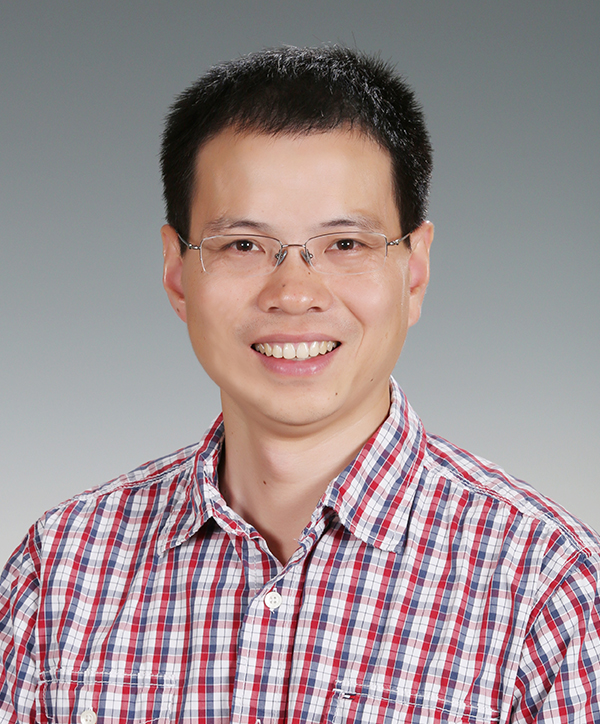Education
1999-2005, Ph.D., College of Life Sciences, Peking University, P. R. China, 2005
1995-1999, B.Sc., College of Life Sciences, Peking University, P. R. China, 1999
Professional Experience
2011- present: Assistant professor, School of life Sciences, Peking University.
2005-2011: Visiting fellow, National Institute on Aging/National Institutes of Health
Research Interests
Dr. Xu received both his B.S. and Ph.D. degree from Peking University in 1999 and 2005, respectively. After postdoctoral training in Dr. Weidong Wang’s laboratory in National Institute on Aging/National Institutes of Health (NIA/NIH), he is currently a tenure-track assistant professor at School of Life Sciences in Peking University. His overall research interest is to discover new protein complexes that participate in DNA/RNA metabolism and to elucidate their molecular mechanisms in inherited human disease.
Cancer arises due to genomic changes, which allow uncontrolled cell proliferation or immortality. Human cellular DNA is constantly bombarded by mutagens from endogenous and exogenous sources, resulting in as many as 1 million individual molecular lesions per cell per day. Cells employ many safeguards and ally DNA replication, gene transcrIption, DNA repair and cell-cycle checkpoints to protect their genomic integrity. Inherited mutations that affect DNA repair genes are strongly associated with cancer-prone clinical syndromes, such as hereditary breast cancer, hereditary nonpolyposis colorectal cancer, Bloom`s syndrome, and Fanconi anemia. Importantly, DNA damage response pathways have become promising targets for novel cancer treatments. Several inhibitors of DNA repair pathways have been developed as clinical anti-cancer agents, such as inhibitors of PARP1, MGMT, CHK1 and CHK2. Thus, basic research to understand DNA repair pathways is crucial not only for advancement of scientific knowledge, but also for cancer prevention and therapy.
Our research is summarized in following areas:
1. Systemically analyzing protein complexes in DNA repair
2. Investigating mechanism of non-homologous end-joining
3. Investigating the functions of new proteins in maintenance of genomic stability.
4. Searching new targets of anti-cancer drug
Representative Peer-Reviewed Publications
1. Chen J, Lu Z, Gong W, Xiao X, Feng X, Li W, Shan S, Xu D*, Zhou Z*. Epstein-Barr virus protein BKRF4 restricts nucleosome assembly to suppress host antiviral responses. Proc Natl Acad Sci U S A. 2022 Sep 13;119(37):e2203782119.
2. Feng S, Ma S, Li K, Gao S, Ning S, Shang J, Guo R, Chen Y, Blumenfeld B, Simon I, Li Q, Guo R, Xu D*. RIF1-ASF1-mediated high-order chromatin structure safeguards genome integrity. Nature Communications. 2022;13(1):957
3. Xu X, Xu Y*, Guo R, Xu R, Fu C, Xing M, Sasanuma H, Li Q, Takata M, Takeda S, Guo R* and Xu D*. Fanconi anemia proteins participate in a break-induced-replication-like pathway to counter replication stress. Nat Struct Mol Biol 2021 Jun;28(6):487-500.
4. Li W, Bai X, Li J, Zhao Y, Liu J, Zhao H, Liu L, Ding M, Wang Q, Shi F-Y, Hou M, Ji J, Gao G, Guo R, Sun Y, Liu Y*, Xu D*. The nucleoskeleton protein IFFO1 immobilizes broken DNA and suppresses chromosome translocation during tumorigenesis. Nature Cell Biology. 2019; 21 (10): 1273-1285.
5. Xu R, Xu Y, Huo W, Lv Z, Yuan J, Ning S, Wang Q, Hou M, Gao G, Ji J, Chen J, Guo R*, Xu D*. A mitosis-specific MRN complex promotes a mitotic signaling cascade to regulate spindle dynamics and chromosome segregation. Proc Natl Acad Sci U S A. 2018 115(43): E10079-E10088
6. Gao S, Feng S, Ning S, Liu J, Zhao H, Xu Y, Shang J, Li K, Li Q, Guo R*, Xu D*. An OB-fold complex controls the repair pathways for DNA double-strand breaks. Nature Communications 2018;9(1):3925
7. Xu Y, Ning S, Wei Z, Xu R, Xu X, Xing M, Guo R* and Xu D*. 53BP1 and BRCA1 control pathway choice for stalled replication restart. Elife 2017 Nov 6;6. pii: e30523. Recommended in F1000.
8. Ahmad M, Shen W, Li W, Xue Y, Zou S, Xu D*, Wang W*. Topoisomerase 3β is the major topoisomerase for mRNAs and linked to neurodevelopment and mental dysfunction. Nucleic Acids Res. 2017 Mar 17;45(5):2704-2713
9. Feng S, Zhao Y, Xu Y, Ning S, Hou W, Hou M, Gao G, Ji J, Guo R*, Xu D*. Ewing Tumor-Associated Antigen 1 Interacts with Replication Protein A to Promote Restart of Stalled Replication Forks. J Biol Chem. 2016 Oct 14;291(42):21956-21962. Selected as “Highlights of 2016” of J Biol Chem.
10. Ahmad M, Xue Y, Lee SK, Martindale JL, Shen W, Li W, Zou S, Ciaramella M, Debat H, Nadal M, Leng F, Zhang H, Wang Q, Siaw GE, Niu H, Pommier Y, Gorospe M, Hsieh TS, Tse-Dinh YC, Xu D*, Wang W*. RNA topoisomerase is prevalent in all domains of life and associates with polyribosomes in animals. Nucleic Acids Res. 2016 Jul 27;44(13):6335-49
11. Xing M, Yang M, Huo W, Feng F, Wei L, Jiang W, Ning S, Yan Z, Li W, Wang Q, Hou M, Dong C, Guo R, Gao G, Ji J, Zha S, Lan L, Liang H, Xu D* , Interactome analysis identifies a new paralogue of XRCC4 in non-homologous end joining DNA repair pathway. Nature Communications, 2015, 6:6233
12. Escribano-Díaz C, Orthwein A, Fradet-Turcotte A, Xing M, Young JT, Tkáč J, Cook MA, Rosebrock AP, Munro M, Canny MD, Xu D*, Durocher D.A*, A Cell Cycle-Dependent Regulatory Circuit Composed of 53BP1-RIF1 and BRCA1-CtIP Controls DNA Repair Pathway Choice. Mol Cell. , 2013, 49(5):872-83. Highlighted by: Science (2013;339:652), Nat Cell Biol. (2013;15:240) and Mol Cell (2013;49:840)
Laboratory Introduction
